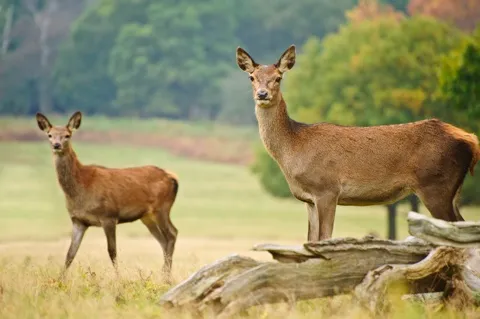Avocet
Absent from the UK for 100 years, avocets returned to breed on the Suffolk coast and Minsmere in 1947. Expect squabbles and high drama out on the Scrape.
Stoat

An abundant rabbit population on the reserve’s grasslands is kept in check by these consummate predators. Shy and skittish, they’re going to be a real challenge to film.
Red deer

Minsmere has one of the largest herds of red deer outside of Scotland. In early June, mothers will be giving birth, and we’re hoping to catch a few glimpses of newborn calves.
Barn owl

A pair regularly nest just outside the reserve, and have favoured hunting grounds along the fens. The poor weather over the past two years has led to dramatic declines across the UK, so we’ll be investigating ways we can all help to conserve the species.
Ant lion

These insects look a bit like a lacewing as an adult, but as larva they are voracious predators straight out of science fiction, lurking at the bottom of funnel-shaped pits, ready to pierce unfortunate prey with huge mandibles.
Marsh harrier

In 1971, Minsmere was home to the last two marsh harriers in the UK. Thankfully, the species has bounced back, and the reserve remains a stronghold for the species, with as many as 16 breeding pairs.
Otter

We’re going to position a state-of-the-art, remote controlled, long lens camera in the heart of the reed beds, hoping to catch these elusive creatures as they fish and frolic.
Common tern

These beautiful, red-beaked birds nest on the Scrape but hunt in the sea, hovering over the water before diving headlong for fish. They drink seawater, eschewing freshwater even if it’s nearby (their nasal glands excrete salt).
Badger

Infrared cameras will monitor the sett through the night, and an expert team of scientists and trackers will endeavour to learn their secrets by day.
Bittern

One of our most threatened species, up to 10% of the UK’s breeding population are found at Minsmere. Officially Britain’s loudest bird, its distinctive ‘boom’ can be heard several kilometres away.
